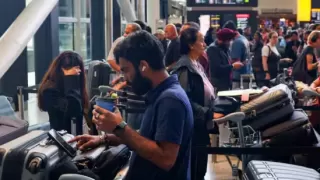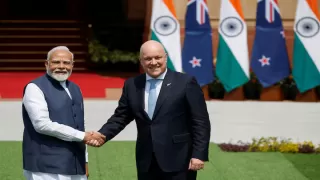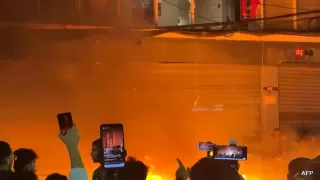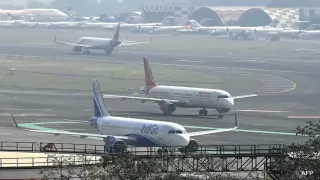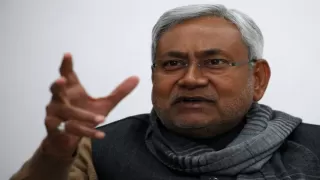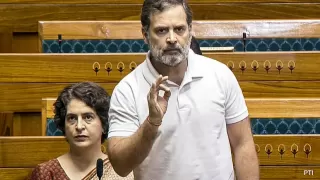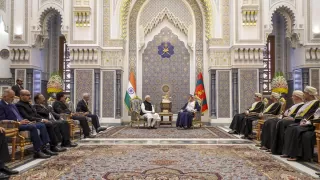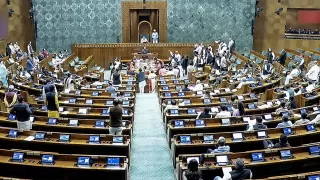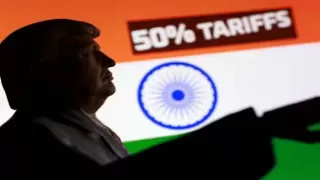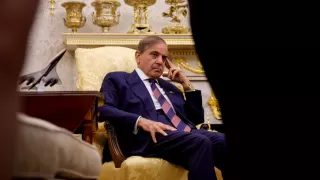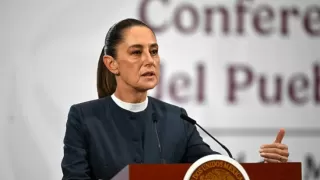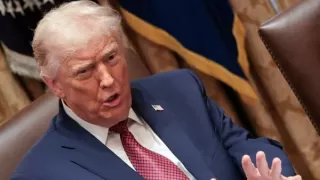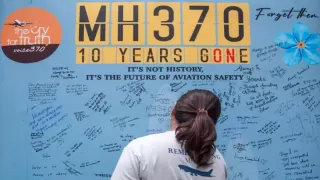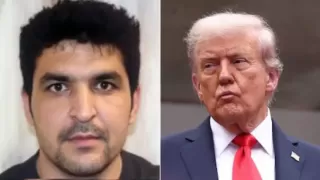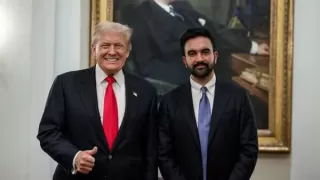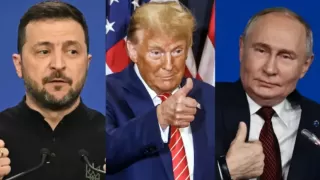In a major relief for Indian techies, professionals, and students in the United States, the Trump administration has clarified the confusion surrounding the controversial $100,000 H-1B visa fee announced last month. The clarification confirms that the new fee will not apply to those already in the United States on valid visas, including current H-1B holders, F-1 students seeking a change of status, or L-1 intra-company transferees. The announcement follows weeks of widespread uncertainty that had created panic among foreign workers, employers, and immigration attorneys across the country.
This marks the first time the Trump administration has formally addressed concerns about the H-1B fee after introducing it through a presidential proclamation. The new regulation had initially sparked outrage due to its steep cost — a fee nearly 20 times higher than existing application charges. Employers feared the policy could severely disrupt their operations by discouraging them from sponsoring skilled foreign talent, especially those from India who form the backbone of the US tech workforce. The latest announcement provides much-needed clarity, assuring that renewals, extensions, and in-country status changes will not trigger the new fee.
Officials confirmed that the proclamation takes effect only for petitions filed outside the United States after 12:01 a.m. ET on September 21, 2025. This means that thousands of Indian professionals and graduates currently living and working in the US will not be impacted by the fee. The United States Citizenship and Immigration Services (USCIS) also reaffirmed that current visa holders can continue to travel in and out of the US without any additional restrictions, ending the confusion that had clouded the visa community since the policy was first announced.
Relief for existing visa holders
The USCIS has provided a detailed breakdown of who is exempt from the new fee. According to the official guidance, anyone already in the United States with a valid H-1B visa, or whose petition was filed before the September 21 cutoff, does not need to pay the $100,000 fee. This exemption also covers international students holding F-1 visas who are changing their status to H-1B and intra-company transferees under the L-1 category. The clarification effectively shields a vast portion of the skilled foreign worker population already residing in the US from the heavy financial burden.
Previously, employers sponsoring H-1B visas paid between $215 and $5,000 depending on company size, type, and category. The newly announced $100,000 fee would have represented a dramatic escalation, costing as much as the annual salary of many junior-level employees. Immigration experts noted that applying this fee to renewals or status changes could have made it virtually impossible for small businesses and startups to retain skilled workers. By exempting existing visa holders, the government avoided a potential mass exodus of talent and prevented widespread disruption to both companies and workers.
USCIS officials emphasized that the new rule was never meant to target individuals already living legally in the US. The agency clarified that its goal was to regulate new entrants filing petitions from outside the country. Nonetheless, the initial ambiguity in the policy language caused significant anxiety among Indian tech professionals, prompting appeals from advocacy groups and lawmakers to issue a formal clarification. The updated guidance now brings relief and stability to hundreds of thousands of families dependent on the H-1B programme.
Why Indians were most affected
Indians have historically been the largest beneficiaries of the H-1B visa programme, accounting for roughly 70% of all new issuances annually. The majority of these professionals work in the technology and services sectors for firms such as Infosys, Wipro, Tata Consultancy Services (TCS), and global giants like Google, Amazon, and Microsoft. For decades, the H-1B route has served as a vital bridge for Indian graduates seeking high-skilled employment in the US, often leading to permanent residency and long-term settlement. Therefore, the introduction of the $100,000 fee sent shockwaves through the Indian community both at home and abroad.
For many, the new policy represented not just a financial hurdle but a potential barrier to upward mobility. The H-1B visa has long been regarded as a symbol of aspiration among India’s middle class — a stepping stone toward international careers and better opportunities. Industry bodies in India warned that the steep cost could have effectively priced out smaller employers, startups, and research institutions that rely on Indian talent to fill crucial technical positions. Some analysts even warned that the policy, if implemented without exemptions, could have “killed the H-1B programme” as we know it.
Data from the US Department of Labor highlights the sheer scale of India’s presence in the H-1B ecosystem: out of approximately 300,000 H-1B visa holders currently in the US, around 200,000 are Indian nationals. When including dependents on H-4 visas, the figure climbs even higher, making Indians a cornerstone of the US technology workforce. Without the clarification, many of these workers faced the prospect of losing their jobs or being forced to return home, creating ripple effects across industries in both nations.
Economic and social implications
Beyond its immediate financial impact, the clarification carries broader implications for the Indian-American community. H-1B visa holders and their families make up nearly one-fourth of the 3 million-strong Indian diaspora in the US. Over the decades, this group has contributed significantly to the American economy, education system, and innovation sector. The H-1B pathway has been instrumental in elevating Indian-Americans to become one of the most educated and highest-earning ethnic groups in the country.
The uncertainty surrounding the new fee had therefore triggered widespread concern within the community. Advocacy organizations and tech lobbyists warned that the move would discourage young talent from pursuing studies or careers in the US, pushing them instead toward other destinations like Canada, the UK, or Australia. Universities, too, expressed alarm that international student enrolment might decline if graduates felt uncertain about transitioning from study to work. The government’s clarification, however, has largely restored confidence in the system — at least in the short term.
For US employers, the exemption is equally crucial. Many American tech companies depend heavily on H-1B workers to fill specialized roles in software engineering, AI, and data science. Without these workers, firms face a severe skills gap that domestic recruitment cannot immediately bridge. Industry leaders have welcomed the administration’s clarification, calling it a “rational step” that preserves competitiveness while allowing for more balanced reforms to the visa programme in the future.
Political and diplomatic fallout
The $100,000 H-1B visa fee sparked strong political reactions both within the United States and abroad. US Commerce Secretary Howard Lutnick defended the move as an effort to “attract high earners and discourage low-skill migration.” However, many business and legal experts disagreed, arguing that the fee would primarily hurt industries dependent on innovation and foreign expertise. American immigration lawyers warned that such a drastic policy could invite lawsuits for being arbitrary and discriminatory under US immigration law.
In India, the reaction was swift and politically charged. Opposition leaders accused Prime Minister Narendra Modi of failing to safeguard the interests of Indian professionals abroad. Congress leader Mallikarjun Kharge called the fee a “birthday gift from Trump to Modi,” referring to the US President’s recent congratulatory phone call to the Indian PM. Meanwhile, Prime Minister Modi defended India’s growing push for self-reliance, stating that dependence on foreign economies was “the real enemy” of national progress. Despite the rhetoric, the clarification was widely seen as a diplomatic success for India, preventing a potential crisis for thousands of its citizens living in the US.
While the exemption eases immediate concerns, the broader policy direction under the Trump administration remains uncertain. Analysts believe that more visa reforms could be on the horizon as part of a long-term strategy to reshape skilled immigration. However, the Indian government’s swift engagement and the advocacy of business groups helped ensure that the worst-case scenario — a blanket $100,000 fee for all H-1B holders — did not materialize.
What comes next for visa applicants
Although the new guidance has clarified who must pay the $100,000 fee, questions remain about how it will be implemented for future applicants. Those filing new petitions from outside the US are still required to pay the fee once it takes effect. Immigration attorneys expect further adjustments or legal challenges as the rule is tested in real-world cases. Employers are also closely monitoring whether the fee will discourage overseas recruitment and impact the competitiveness of the US technology sector.
For now, the message from officials is clear: existing visa holders and in-country applicants are safe. The US government appears to be adopting a cautious approach to avoid massive backlash while retaining the ability to modify rules to align with domestic economic priorities. Experts believe this compromise will likely hold, at least until the next round of immigration policy debates begins ahead of the 2026 election season.
For thousands of Indian professionals and students, this decision represents more than just financial relief — it’s a reaffirmation of their place in America’s skilled workforce. As the global economy becomes increasingly dependent on cross-border collaboration and technological innovation, policies like these will continue to shape not only individual careers but also the broader relationship between the United States and India.
Also Read: World Leaders Extend Diwali Wishes: Trump, Sharif, Others




